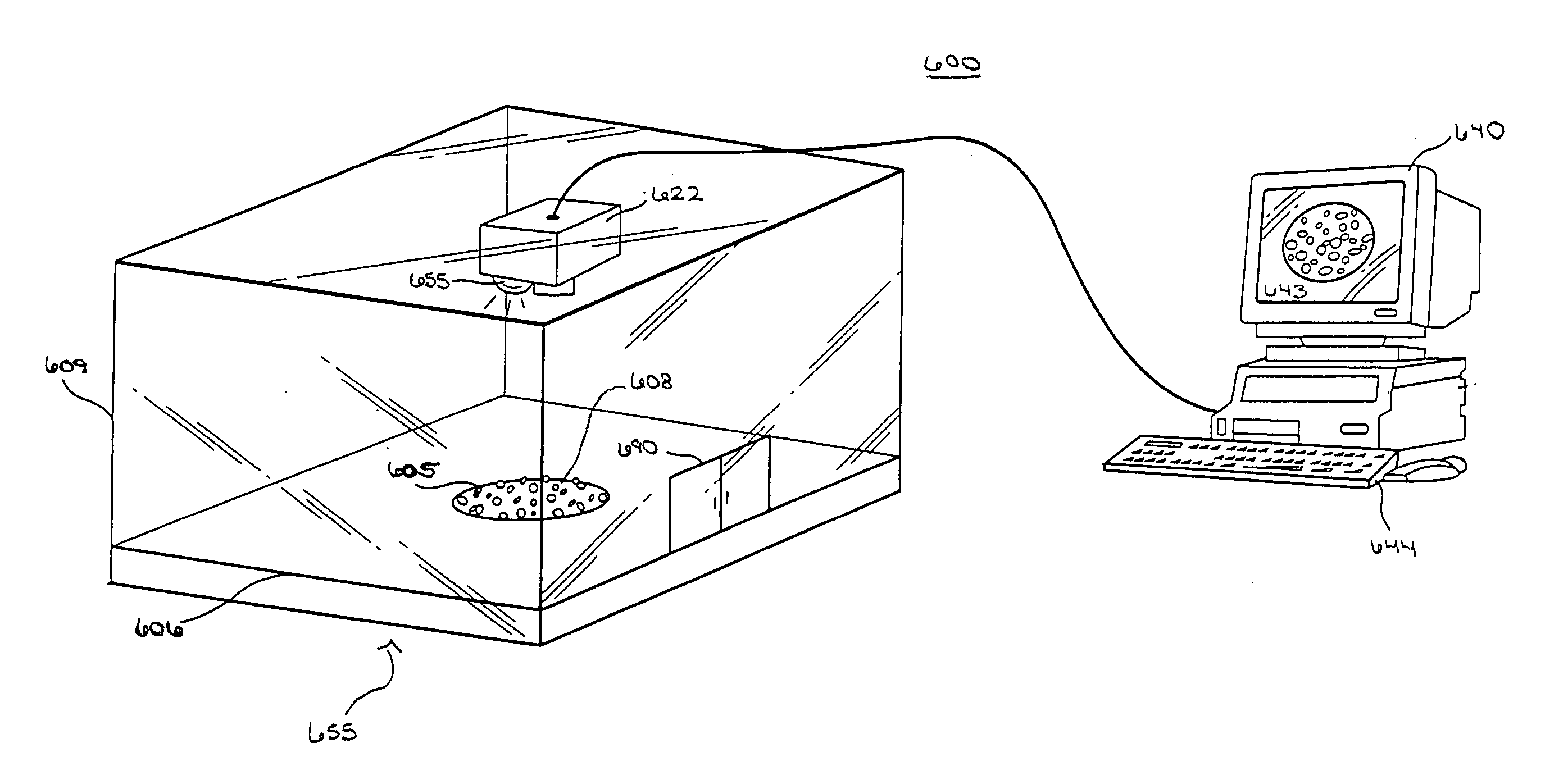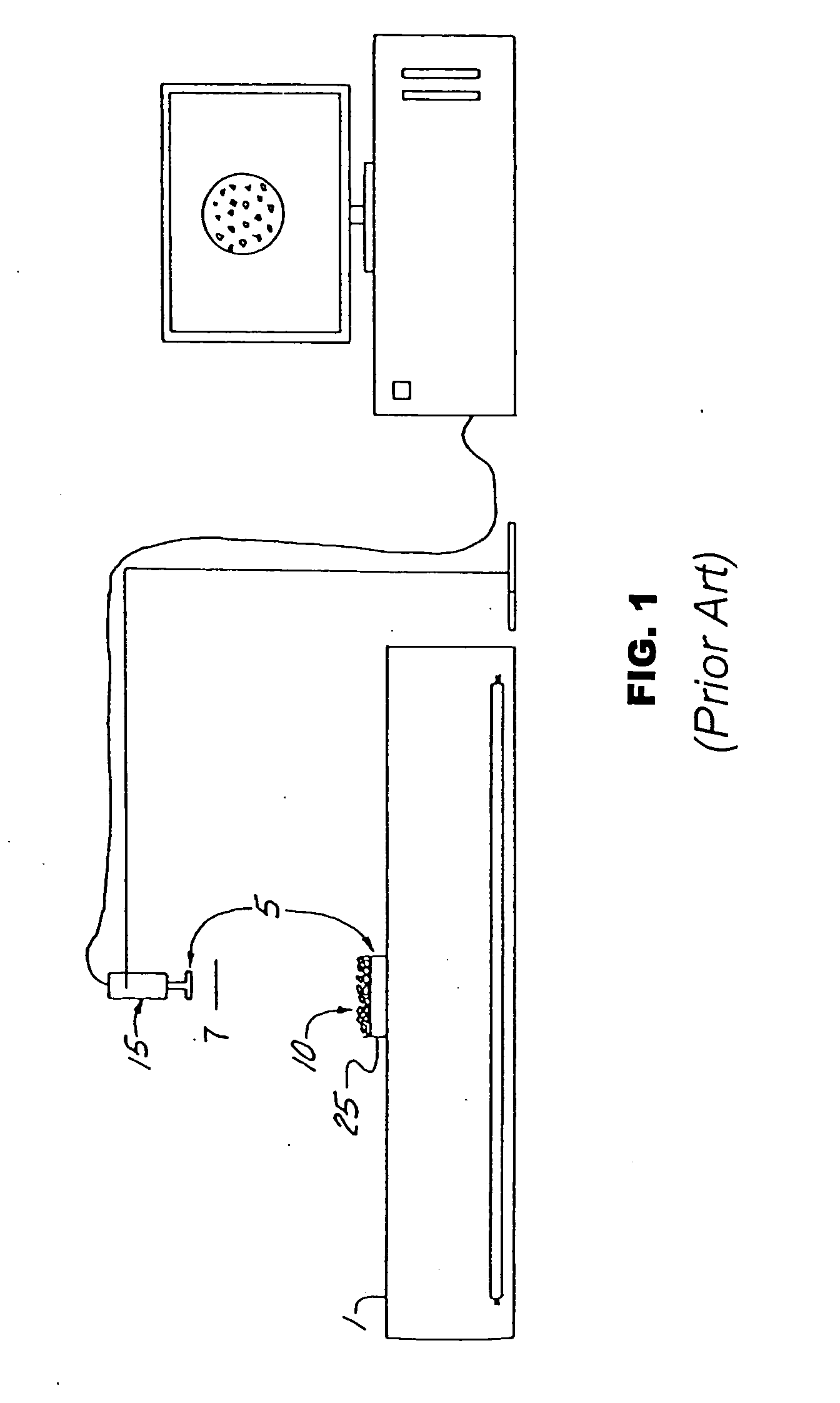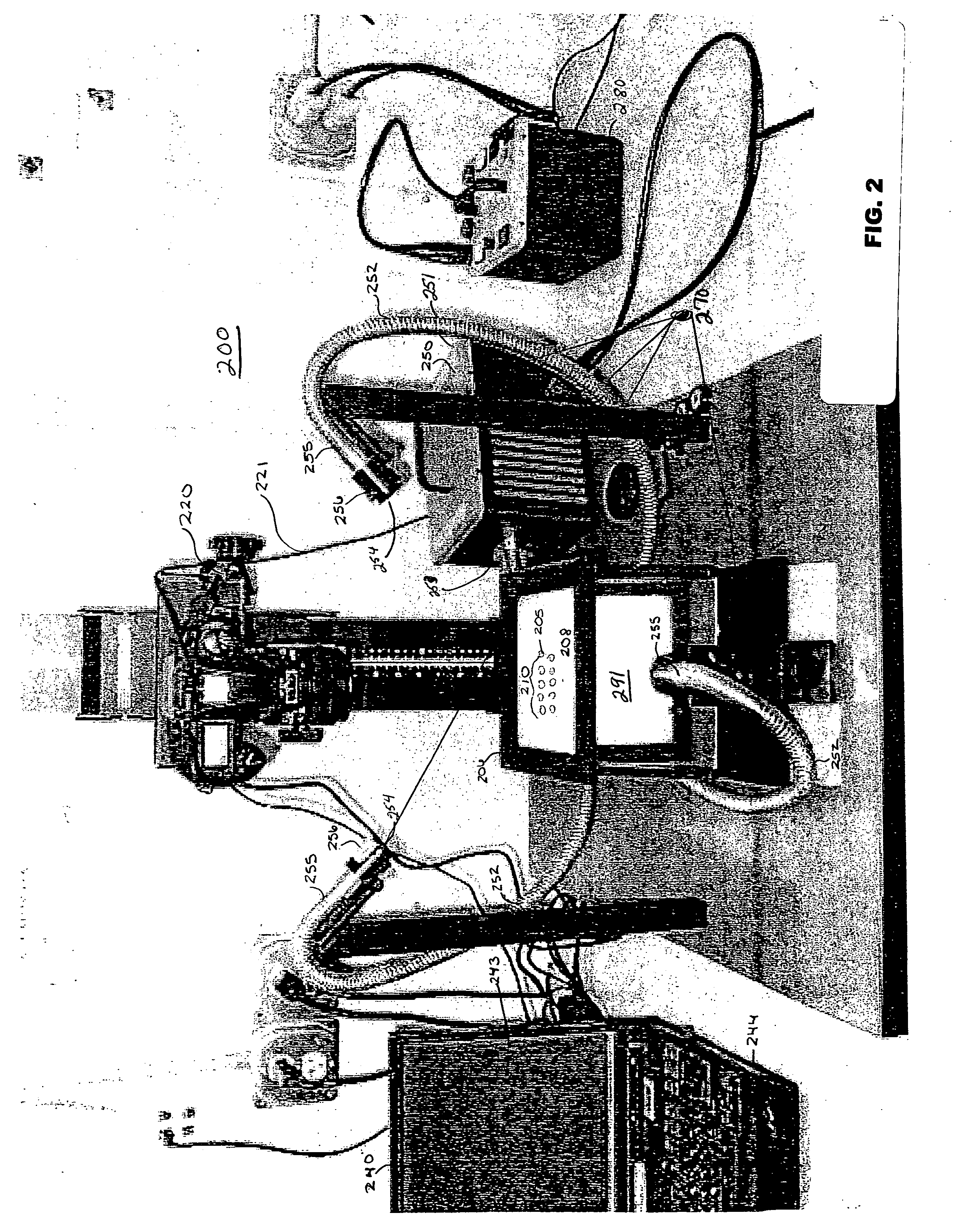Method and apparatus for analyzing quality traits of grain or seed
a quality trait and quality technology, applied in the field of methods and equipment for analyzing quality traits of grain or seed, can solve the problems of unsatisfactory consumer acceptance of products, undesirable hybrids with very hard (flinty) grains, and relatively unreliable nelson methods in practice, so as to remove variability in image analysis
- Summary
- Abstract
- Description
- Claims
- Application Information
AI Technical Summary
Benefits of technology
Problems solved by technology
Method used
Image
Examples
Embodiment Construction
The present invention provides a method of and apparatus for color image analysis for characterizing multiple grain quality traits in a quantitative manner. The method and apparatus of the present invention provides an arrangement for objectively determining seed / grain quality by detecting and analyzing visible light reflecting from and / or transmitted through at least one seed / grain.
The Prior Art shown in FIG. 1 uses an apparatus with illumination which projects visible light toward the sample on a stage to form a back lit sample. Prior to reaching the sample the light passes through a linear polarizing light filter. The light transmitted through the filter, sample, and the stage is then transmitted through a second cross-polarizing light filter prior to being captured by the video camera. The light received by the camera is transmitted to a computer and analyzed to determine percent hard endosperm and grain color.
The present invention is somewhat similar to the Prior Art in FI...
PUM
| Property | Measurement | Unit |
|---|---|---|
| specific gravity | aaaaa | aaaaa |
| angles | aaaaa | aaaaa |
| distance | aaaaa | aaaaa |
Abstract
Description
Claims
Application Information
 Login to View More
Login to View More - R&D
- Intellectual Property
- Life Sciences
- Materials
- Tech Scout
- Unparalleled Data Quality
- Higher Quality Content
- 60% Fewer Hallucinations
Browse by: Latest US Patents, China's latest patents, Technical Efficacy Thesaurus, Application Domain, Technology Topic, Popular Technical Reports.
© 2025 PatSnap. All rights reserved.Legal|Privacy policy|Modern Slavery Act Transparency Statement|Sitemap|About US| Contact US: help@patsnap.com



